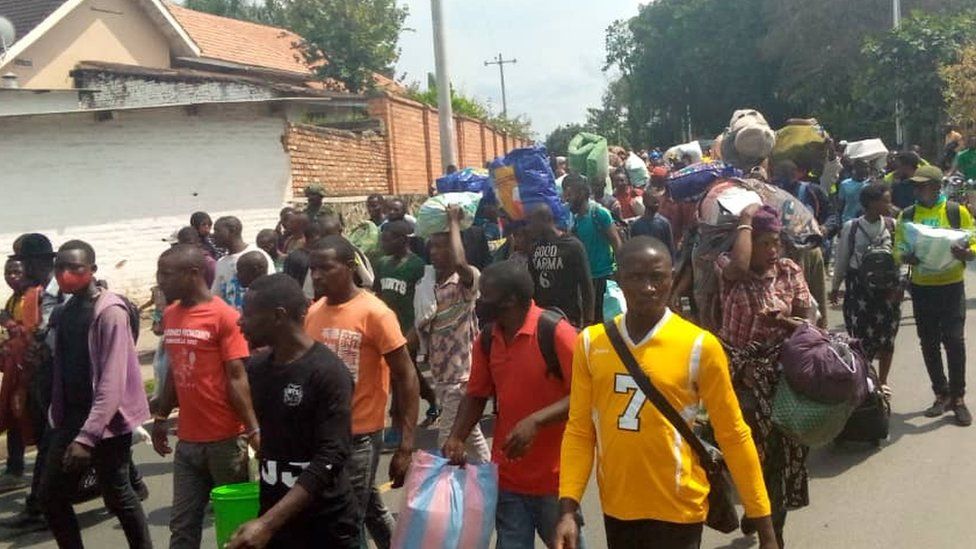DR Congo: Thousands flee Goma after second volcano warning
Tens of thousands of people have been evacuated from the city of Goma in the Democratic Republic of Congo over fears of another volcanic eruption.

Local authorities have said Mount Nyiragongo could erupt once again with little warning.
The volcano, 10km (six miles) from Goma, spewed lava over the weekend, killing 32 people and leaving thousands homeless, the UN says.
Thousands fled then but some residents had started returning.
The area has been rattled by more than 200 aftershocks which have destroyed several buildings, while two cracks several hundred metres in length have appeared in the ground.
Goma is a lakeside city where around 670,000 people live, according to UN estimates.
Tremors have also been felt more than 90km away in the Rwandan capital, Kigali.
Ndima Kongba, the military governor of North Kivu province, ordered the evacuation of nearly a third of the city’s residents on Thursday, saying magma had been detected underneath Goma and nearby Lake Kivu.

“Right now we can’t rule out an eruption on land or under the lake,” Mr Kongba said, ordering 10 districts of the city to evacuate.
“It is very important to stay away from the lava flows, because of the danger of death from suffocation or burns,” he said.
As well as the risks from lava and earthquakes, there are also concerns that seismic activity could destabilise a huge methane bubble trapped under Lake Kivu.

Authorities have arranged for people to be transported to the city of Sake, around 20km west of Goma.
Others are leaving the city by ferry, others by car, creating traffic jams, and others on foot, carrying their possessions.
Local resident Alfred Bulangalire, 42, left the city with his wife and four children. “I know that my shop will be looted, but I have to protect myself and my family,” he told Reuters news agency.

Thousands entered Rwanda, staying in the border city of Gisenyi, reports the BBC’s Samba Cyuzuzo.
Rwandan authorities are directing these people to a former refugee camp and a secondary school.
Many residents of Gisenyi itself have fled east, deeper into Rwanda, as earth tremors continue to shake the city. Rwandan authorities have reported earthquakes on Thursday reaching 4.9 magnitude.
Rivers of molten rock streamed from Mount Nyiragongo during its eruption on Saturday, setting houses and forest alight on the edges of Goma.
One stream of lava stopped close to Goma’s airport, the main hub for humanitarian aid operations in the east of the country.
The UN’s children’s agency, Unicef, said it had rescued 530 missing children separated from their parents during the eruption.
Mount Nyiragongo is one of the world’s more active volcanoes but there were concerns that its activity had not been properly observed by the Goma Volcano Observatory since the World Bank cut its funding amid allegations of corruption.
In a report on 10 May, the observatory warned that seismic activity had increased.
Last year, the observatory’s director, Katcho Karume, told the BBC World Service’s Science in Action that the volcano’s lava lake had been filling up quickly, increasing the chances of an eruption in the next few years. But he also warned that an earthquake could trigger a disaster earlier.
Before last weekend, Mount Nyiragongo’s last major eruption was in 2002. It killed 250 people and left 120,000 homeless. Its deadliest surge happened in 1977, when more than 600 people died. BBC News






